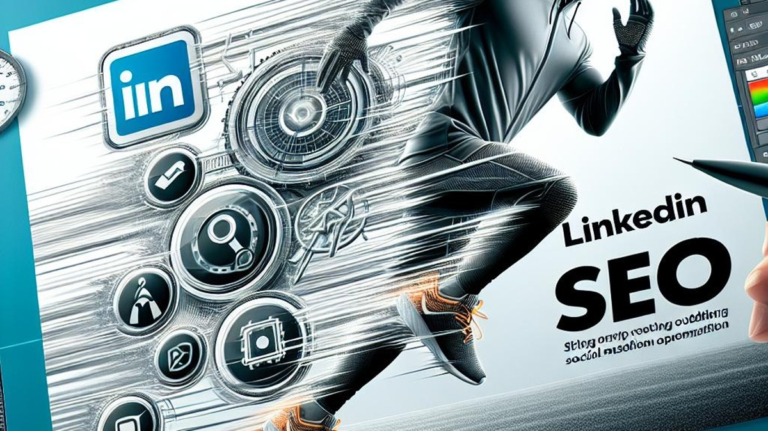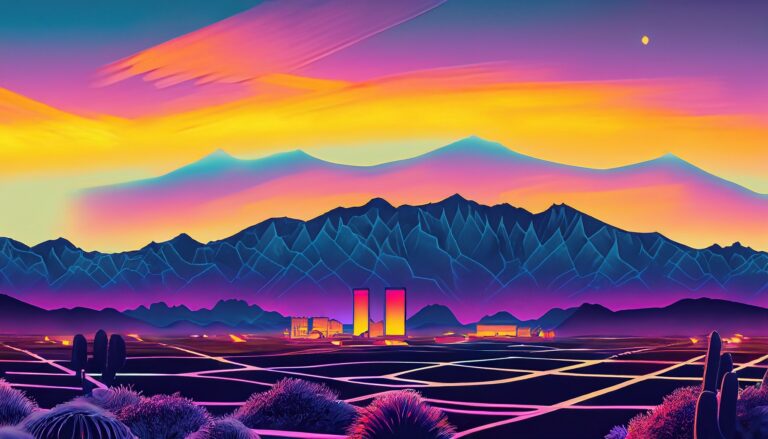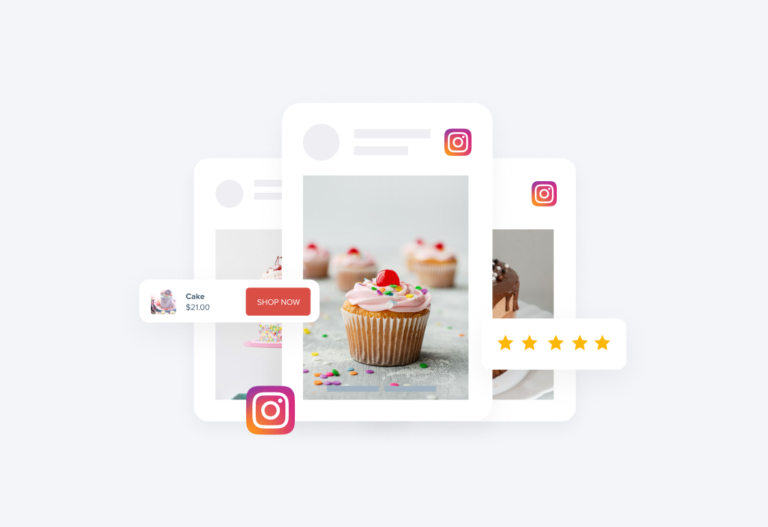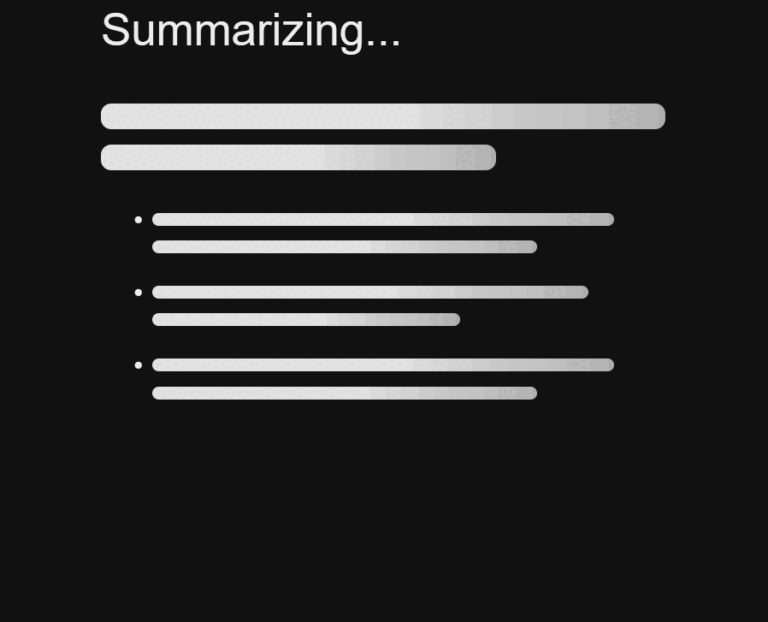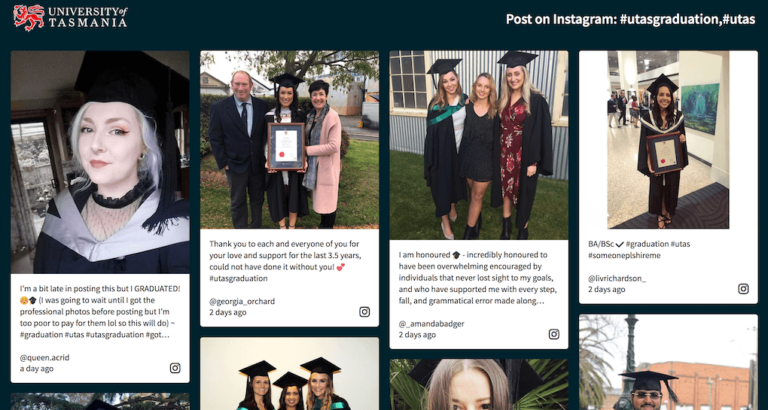Event marketing is a powerful way to reach out directly to clients and prospects, creating new connections through engaging, memorable experiences. Whether you’re hosting a small pop-up or a large conference, these event marketing examples will help bring your brand to life.
In this post, we’ll look at 15 event marketing examples that can inspire your strategy, whether your event is virtual or in-person. From social walls to pop-up shops, these ideas will spark your next campaign.
What is event marketing?
Event marketing, also known as experiential marketing, involves creating unique experiences to promote your business, products, or services. Whether virtual or in-person, event marketing helps you engage your audience by providing memorable experiences that drive connection.
Many highly effective event marketing examples include a social wall to display live attendee-generated content and creating interactive experiences that make people feel part of the event.
Benefits of event marketing examples for event professionals
Event marketing can significantly boost audience engagement, build trust, and drive brand loyalty. For example:
- 71% of younger generations say their trust in a brand increased after engaging with it at a live event, and 85% believe trust is critical when making a purchase decision. (Source: Freeman)
- 83% of marketers report that events help their company stand out from the competition. (Source: Splash)
- Social media walls or live feeds hold the highest effectiveness in engaging attendees at events, according to 45% of experts. (Source: Walls.io)
Through event marketing, you can create immersive experiences that leave a lasting impression and help you stand out in the market.
⭐ Related: Events Statistics, Enhancing Event Experiences with UGC
Event marketing examples that work
When it comes to successful event marketing, nothing beats real-life examples that demonstrate how innovative strategies can engage attendees and create memorable experiences. Here are some of the best event marketing examples that highlight how brands have used social walls to foster interaction, build community, and enhance the overall impact of their events.
Sweetwater GearFest
GearFest attendees saw their social media posts displayed in high-traffic dining areas, encouraging more interaction and conversation at this annual music gear festival.
Why it works: Featuring attendee-generated content in public spaces turns passive engagement into active participation, making everyone feel included and inspired to contribute.

2. Digital photo booth
With us all more connected today than ever, why limit your experiential event to one place? With virtual event photo booth technology, you can create a truly global experience that bridges geographical gaps and creates a shared understanding across continents.
Why it works: This experiential event marketing example showcases the power of technology in bringing people together, fostering a sense of global community that aligns perfectly with international brands or causes.
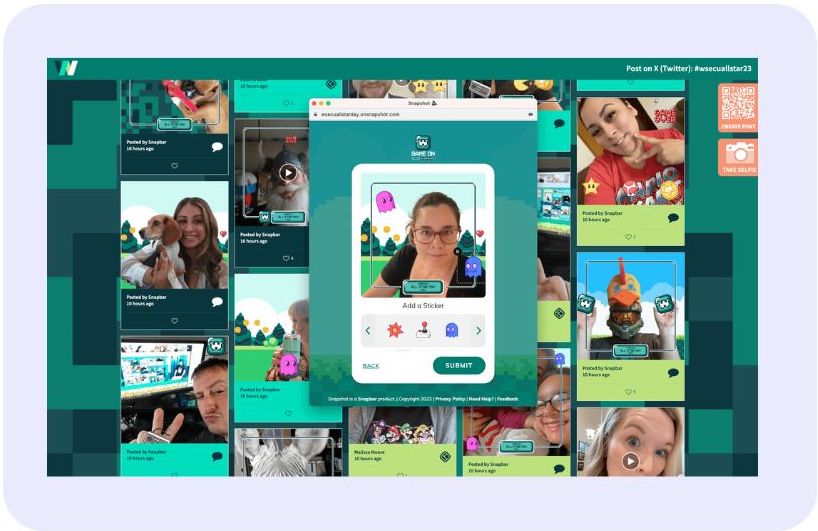
3. Marathon moments on the go
Generali Cologne Marathon
This marathon didn’t stop at the finish line! Generali engaged participants throughout the year, displaying posts with branded hashtags on a social wall that kept the race spirit alive.
Why it works: Keeping engagement ongoing even after the event fosters community, giving participants a reason to stay connected and engaged.
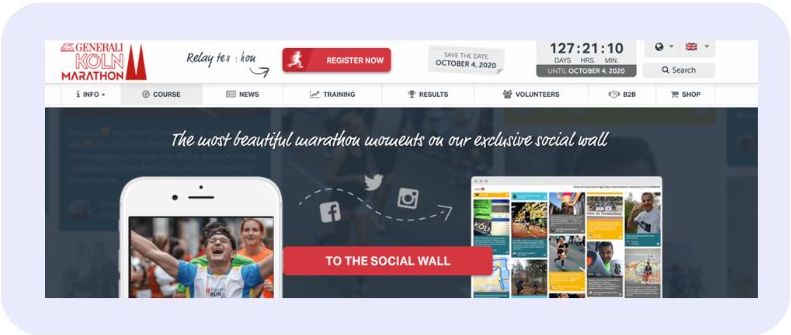
4. Dancing virtually
Showstopper Dance Competition
When Showstopper’s iconic dance competition went virtual, they kept the energy high by showcasing participant posts on a social wall. Dancers cheered each other on, creating a virtual dance floor of support.
Why it works: This event marketing example features user-generated content in a competitive setting, adding a layer of excitement, keeping participants connected and motivated, even from afar.

La Copa del Rey Basketball Championship
Although fans couldn’t attend in person, their support was front and center at La Copa del Rey. A 32-meter social wall displayed fan posts courtside, connecting viewers to the game.
Why it works: Engaging remote audiences with real-time social interaction bridges the gap between the live event and the fans at home, making everyone feel part of the action.

6. Sky high engagement
Gordon Bennet Air Balloon Competition
At the prestigious air balloon competition, Gordon Bennet combined live broadcasts with a social wall showing posts from viewers. The sky wasn’t the limit for engagement!
Why it works: Integrating live social content into traditional broadcasts creates a multi-layered experience, allowing viewers to become active participants rather than passive spectators.
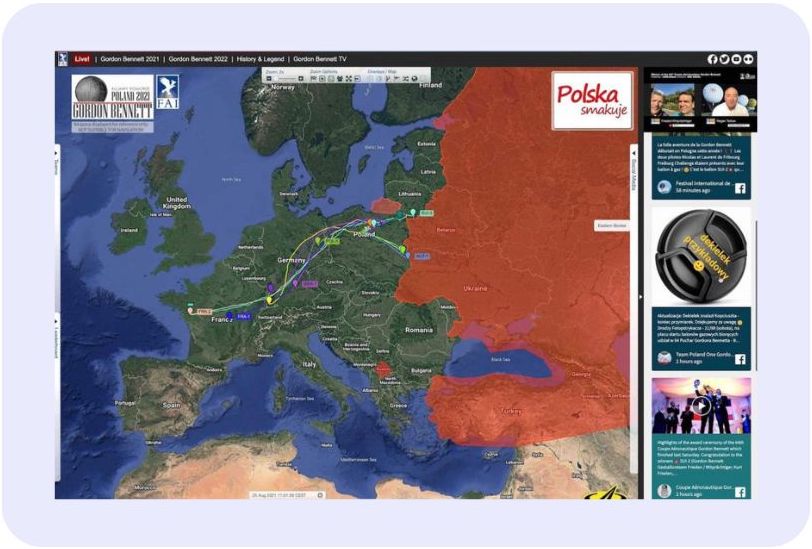
7. Fan finale engagement
Shameless Final Season Launch
Fans of Shameless got their moment in the spotlight during the show’s finale event, with their posts featured on a social wall alongside live talks with the cast.
Why it works: Featuring fan-generated content alongside live events builds excitement and fosters deeper fan loyalty, especially during pivotal moments like a series finale.
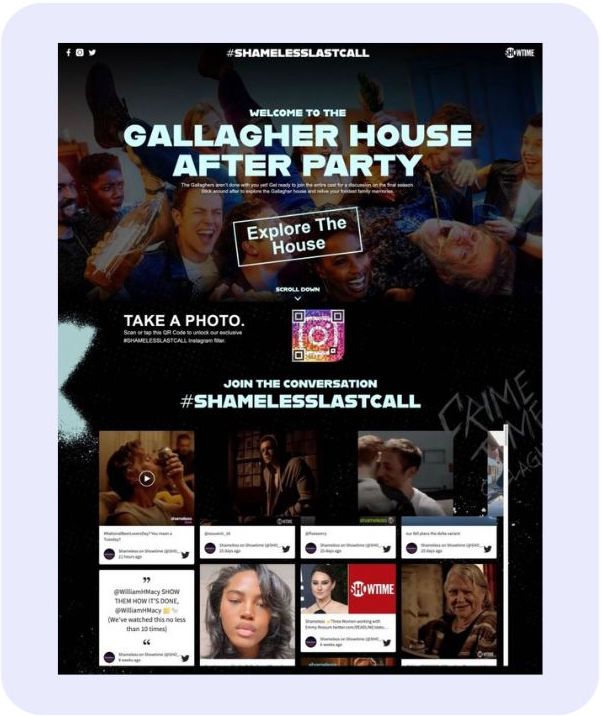
8. Interactive live polling
The NAMM Show
With a live poll visualizer, transform dry data into a visually stunning, interactive experience. This experiential event concept turns audience opinions and feedback into dynamic, evolving art pieces that capture the collective voice of your attendees.
Why it works: This event marketing example gathers valuable insights and creates a visually engaging focal point that evolves throughout your event.
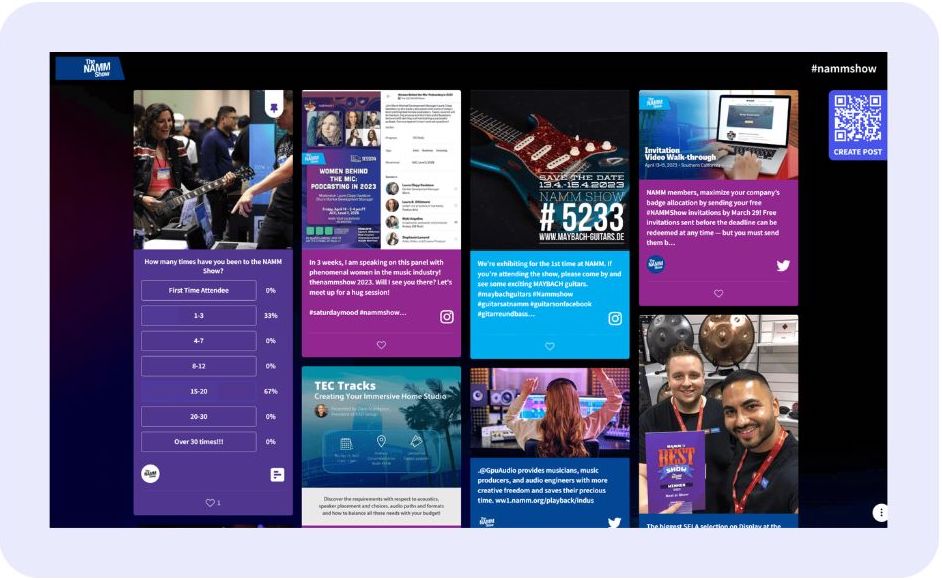
⭐ Related: Interactive Live Polling, 6 Ways to Drive Engagement
DMEXCO Trade Fair
DMEXCO bridged offline and online audiences by displaying social content on event screens, encouraging hashtag use and sparking real-time conversations.
Why it works: Combining in-person and digital engagement creates a seamless experience, encouraging interaction between different audience types and broadening the event’s reach.
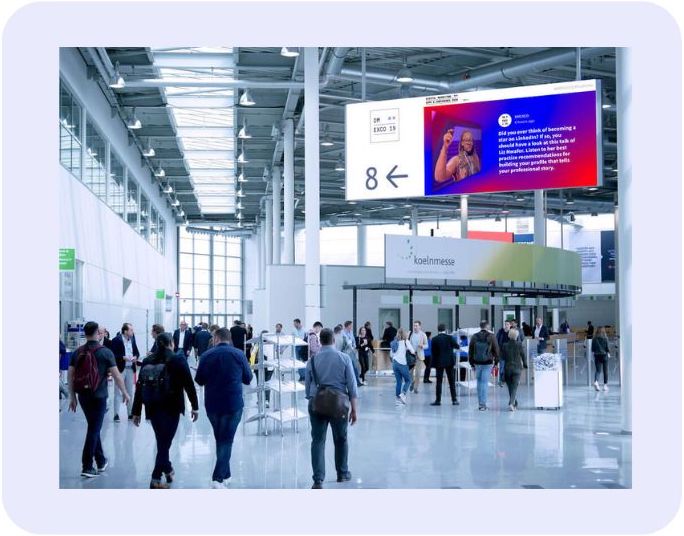
⭐ Related: Trade Show Booth Ideas For Your Next Event
10. A dialogue in tweets
Berlin Energy Transition Dialogue
Attendees didn’t just sit back and listen—they got to ask questions via Twitter, and their interactions were displayed on a live social wall for all to see.
Why it works: Encouraging direct interaction with speakers in real-time keeps virtual audiences engaged and active, turning passive viewing into an interactive dialogue.

Microsoft Hybrid Work Tour
Microsoft took their Hybrid Work Tour on the road, encouraging attendees to share their experiences on social media, which were displayed on a mobile social wall mounted on their branded van.
Why it works: Combining mobility with real-time social engagement creates a dynamic, ever-evolving event experience that engages both attendees and passersby.
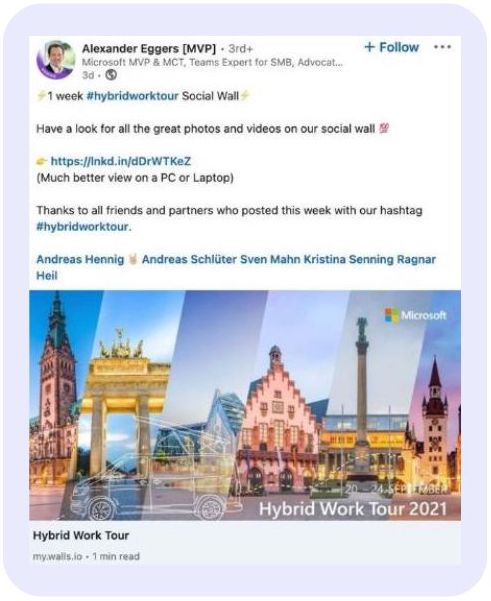
International Day of Clean Air for blue skies
On the International Day of Clean Air, the UN encouraged everyone, from governments to individuals, to take action against air pollution. To amplify the message, they set up a social media wall that showcased posts from all around the world in multiple languages, using the hashtags #WorldCleanAirDay and #HealthyAirHealthyPlanet.
Why it works: Featuring diverse voices on a global issue creates a powerful sense of unity, allowing people to share their efforts and inspire collective action.
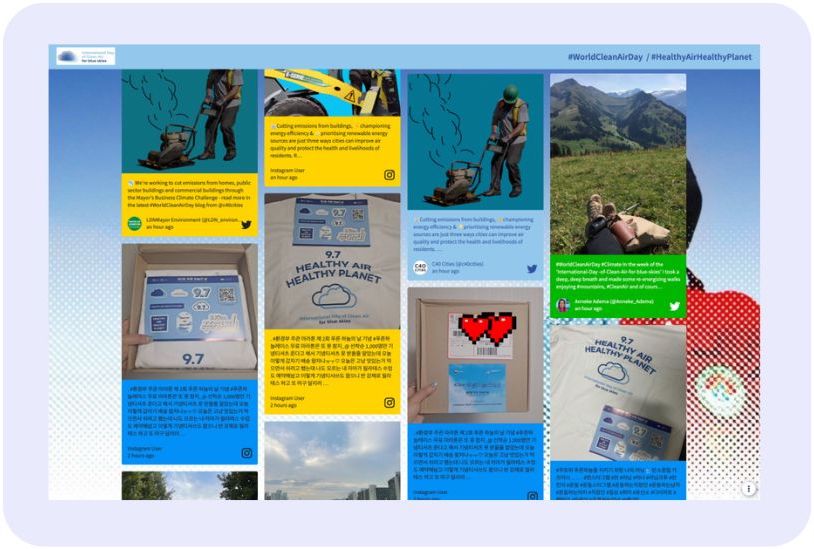
Saalbach Ski World Cup
The Ski World Cup didn’t just feature talented skiers but also showcased fan-generated content via a social wall. Hashtags flew as fast as the athletes!
Why it works: This event marketing example showcases fan content during high-energy sports events, keeping the excitement alive, allowing fans to feel part of the event even if they’re watching from home.
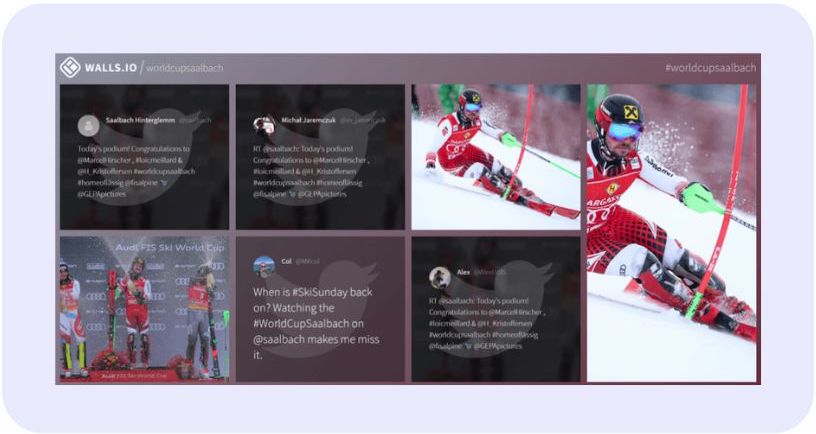
British Council Study UK Alumni Awards
The British Council took their prestigious alumni awards online with a social wall showcasing alumni stories. Posts from proud winners and supporters created an online celebration that lived beyond the event.
Why it works: Celebrating achievements via social media amplifies recognition, turning it into a community celebration and extending the reach of the event far beyond the venue.
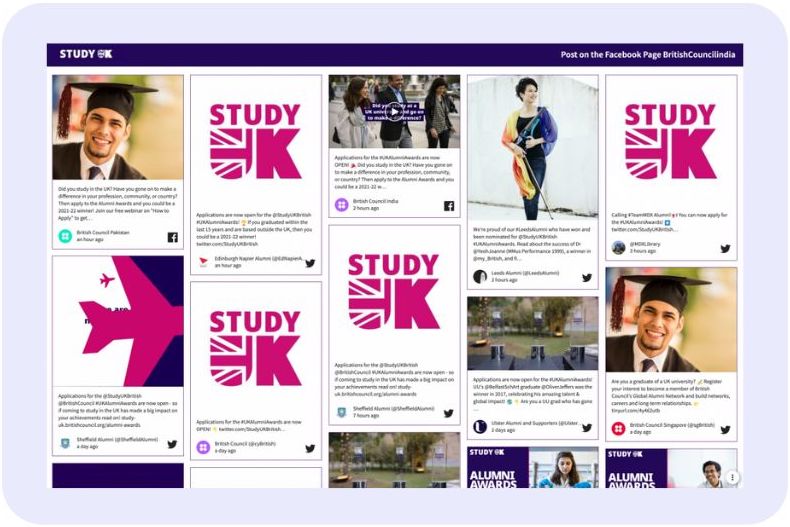
15. Music and memories
Sony Music Depeche Mode Movie Launch
Sony Music celebrated the release of Depeche Mode’s SPIRITS in the Forest by inviting fans to share their stories, which were featured on a social wall during the movie launch.
Why it works: Engaging fans around shared memories creates a personal connection to the event, making it more meaningful and driving stronger engagement.
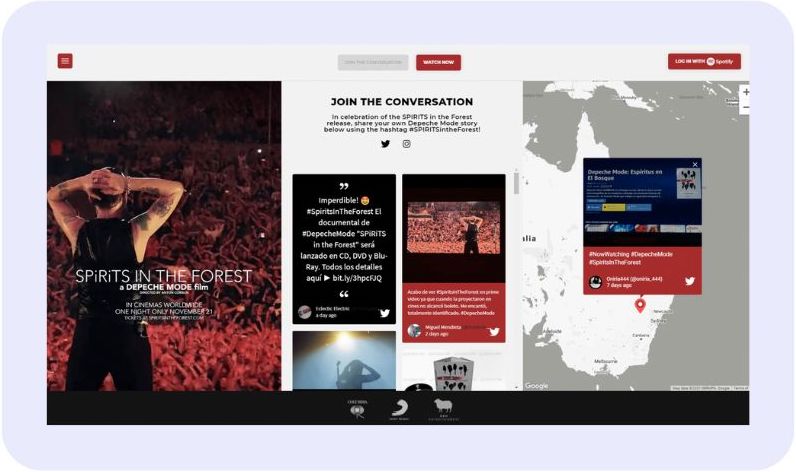
Boost engagement with event marketing examples
These event marketing examples demonstrate how to engage your audience and create memorable experiences. Incorporating interactive elements like social walls helps boost participation, collect valuable content, and amplify your event’s impact.
Try Walls.io today and enhance your event marketing strategy with a social wall!
